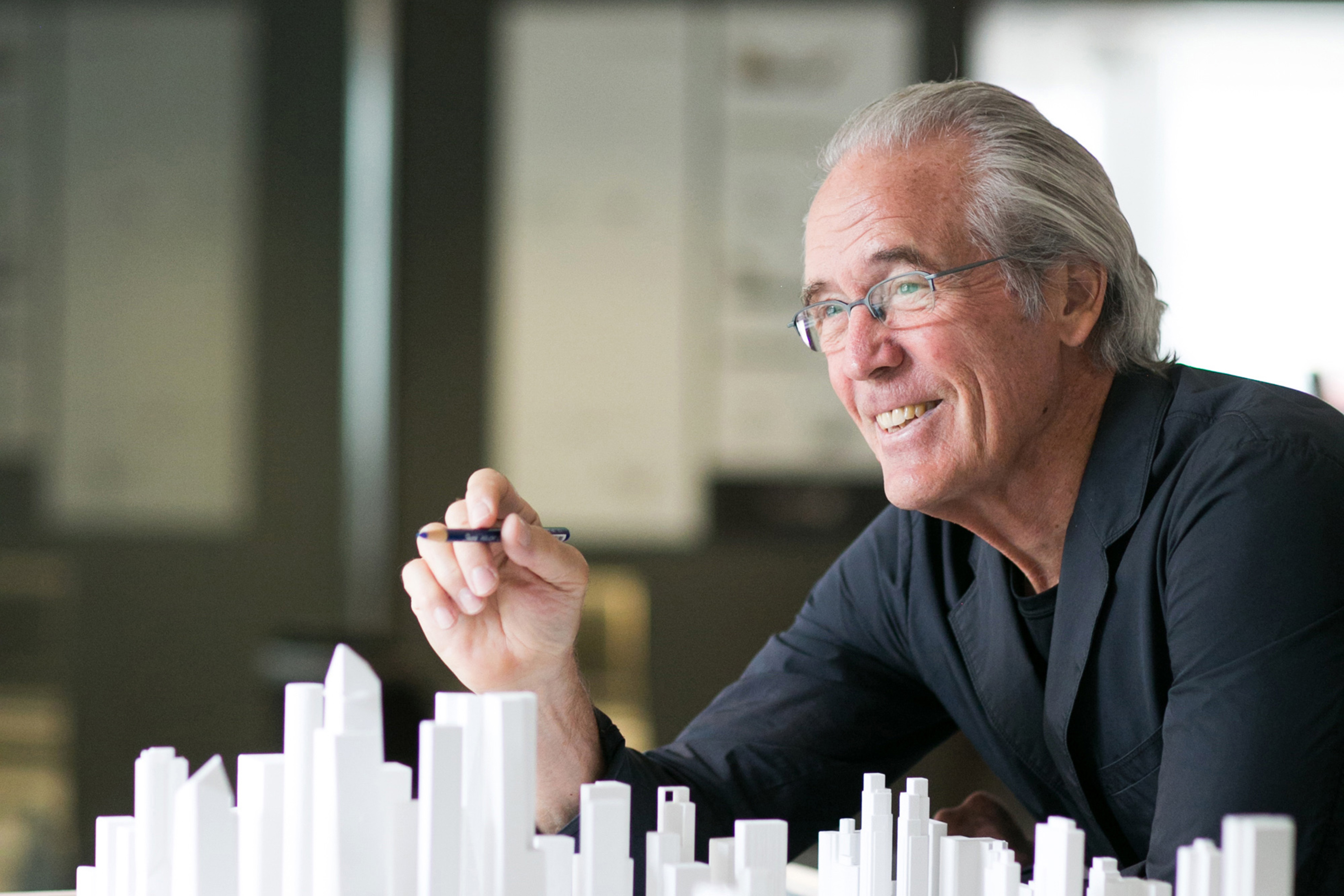An Ongoing Conversation with Architecture
-
-
MIT Technology Review
Filed Under
Recommended

For William Pedersen MArch ’64, design is always a dialogue. “I didn’t seek a signature style,” says Pedersen, a founding partner and the design leader at Kohn Pedersen Fox Associates (KPF). “I wanted my buildings to evolve as a response to the context within which they were placed.”
Born in Minnesota, Pedersen has building and design in his DNA. His Norwegian immigrant grandfather was first a surveyor and then a builder who published one of the earliest catalogs of small homes. His father, who continued the publication into the early 1970s, studied architectural engineering at the University of Minnesota. Pedersen also enrolled at the University of Minnesota, where he majored in architecture and made the hockey team, playing alongside Herb Brooks—future coach of the US men’s 1980 “Miracle on Ice” Olympic team.
The site makes the gesture. My architecture makes the response.
Several of Pedersen’s professors encouraged him to study architecture at MIT, having been inspired by the Institute and by architecture professor Eduardo Catalano. Pedersen, too, was inspired by Catalano, and after his graduation they worked together on the new home of the Juilliard School of Music in New York.
In 1965 Pedersen won the Rome Prize in architecture, which enabled him to live for two years at the American Academy in Rome. In 1967 he joined the firm of I.M. Pei ’40 in New York, where he worked as a senior designer on the National Gallery in Washington, DC, before joining the office of John Carl Warnecke. There, he met his future partners Gene Kohn and Sheldon Fox. In 1976, despite an acute economic recession, they launched KPF.
Today the firm has more than 600 employees and offices in nine of the world’s major cities. In 2021 Pedersen wrote the book Gesture and Response, encapsulating his design philosophy. “The site makes the gesture,” he says. “My architecture makes the response.” It features 25 of his favorite buildings—including 333 Wacker Drive in Chicago and the Shanghai World Financial Center in China—and several of his furniture designs, which respond to the demands of the human body.
Pedersen stepped away in 2015 to care for his wife, Elizabeth, and to design a building for the Shelter Island Historical Society, of which she was the president. She died of cancer in 2019. Today he lives on Shelter Island and in Manhattan, continuing his pursuit of furniture design and occasionally visiting the offices of KPF. “My partners and I wanted to create a firm which outlived us,” he says. “Gene Kohn always compared our firm to a multistage rocket. We were the first stage. Now the second stage is well in flight.”
This story also appears in the September/October issue of MIT Alumni News magazine, published by MIT Technology Review.
Photo courtesy of Kohn Pedersen Fox Associates.







